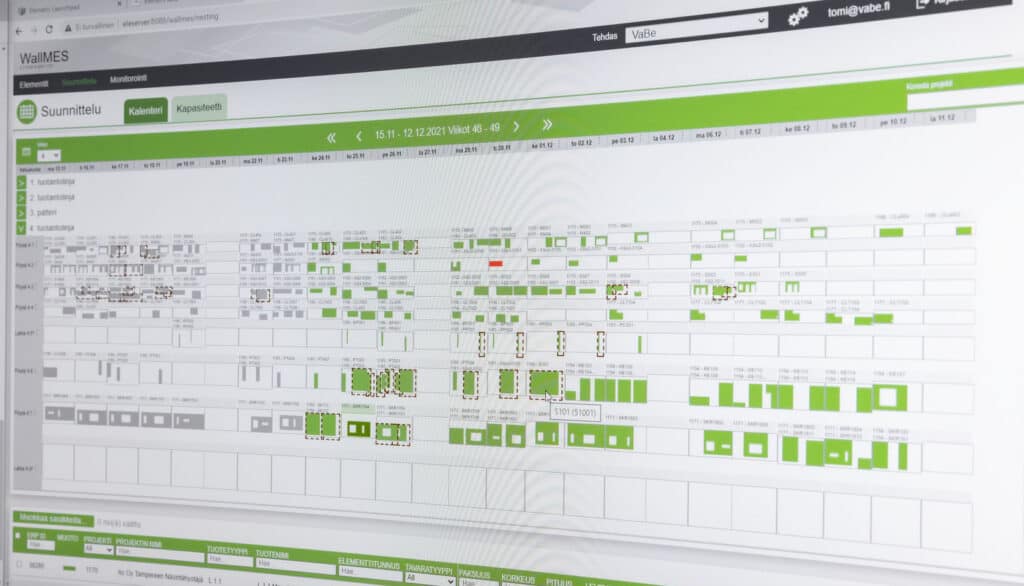Precast concrete technology: 3 top trends

Earlier this year you were able to read about the 3 precast trends to keep track of, and now I will elaborate on their implications for the precast concrete technology. Keep on reading to discover my take on the future direction of precast concrete production technologies.
1. Safety as a motto
I wonder how many of you connect precast concrete plants with the adjectives tough and dirty, as that is not the case anymore. New and modern precast plants are equipped with the latest technologies. They boost production accuracy, quality, safety and sustainability. Safe and digitalized production processes are what interest younger generations – your potential future employees. With a safe and modern factory you spread the message of an employer who truly cares for their employees. However, it is not only about technology but also about attitude: Factories with exactly same equipment can have majorly different work conditions!
Often it is the case that correct use and efficient maintenance of machinery equals to safe work conditions. However, newer machine models are equipped with a variety of solutions to reduce safety risks and the number of occupational accidents. Examples of such solutions are tools for safe lifting, movement sensors and auto-stop function. Elematic saws also promote healthier working environment as they have very efficient dust reduction systems which limit the amount of respirable silica dust.
Mid-States Concrete Industries was established in 1946 in South Beloit, USA. The company has an Elematic hollow-core precast production plant with an annual capacity of 273,600 m2 when each bed is cast once a day.
Safety on construction site
The safety of precast concrete technologies is not limited to the precast plant only; it also affects the construction sites. Do you consider it safe enough to lift hollow-core slabs with clamps? There have been unfortunate incidents when the slabs have accidentally fallen from the clamps. Thus, we have developed a solution to make lifting safer. Looper E9 is designed to make a hole in the unhardened hollow-core slab, install a lifting loop in the hole and compact the concrete around the loop, reinforcing the strand. This way the loop will hold and lifting the slab will be safer.
2. The digital journey
“Internet of things” aka IoT is been hyped among the industry professionals for a while now. I, too, consider it something that will transform the way precast plants function. Already now the latest technologies enable discovering production bottlenecks and preventive maintenance needs. How? For example, you may have a car that informs you about the next maintenance. The same principle is applied to precast machinery – to determine the most optimal time for maintenance, data, such as produced square meters, the speed of the machine and screws as well as casting quality are processed. These values can be adjusted separately for each factory and machine to optimize the time of a maintenance break and minimize the disruption to production.
Another perspective to factory digitalization is to take a look at FloorMES E9, a manufacturing execution system for supervising and planning precast floor production. The idea is that such a system monitors how the machines are moving along the beds, and can thus; utilize the location data for optimizing the production even further. In other words, by digitalizing some operations of your precast plant, you are able to significantly increase the cost-efficiency of the production.
Read more about how to digitalize hollow-core slab production here.
3D precast models
Currently, 3D-models are successfully used by designers on varied fields. For instance, architects and structural designers can better spread their ideas when their models exist in 3D-format. The same applies to precast plants. 3D factory models make it easier to evaluate the space and safety needs. In machine development, 3D-models help analyzing the ways to improve usability and safety. Also, when you get to see the machine in 3D before its manufacturing begins, it is easier for you to pinpoint any special requirements.
One question remains; will 3D-printing work in building construction? In my opinion, this is something that we must keep a close eye on. However, at this moment I find it difficult to see how an entire house could be printed at a construction site. Instead, it could be more reasonable to think about printing decorative elements or molds for complex designs. This could be a way to start utilizing 3D-printing, but we shall see how it develops.
3. Sustainability as a competitive advantage
There are three pillars of sustainability: social, economic and environmental. The earlier discussed safe working conditions constitute the social pillar of precast concrete, together with its ability to rapidly build of sustainable and affordable housing. The economic pillar is reached through efficient production technologies. Automation, production optimization and preventive maintenance are well-functioning ways to boost the cost-efficiency of production. That leaves out the environmental pillar; however, it is embedded in all the precast concrete production and construction processes.
Minimizing the amount of waste
In comparison to other construction materials, precast concrete is the more sustainable option. The biggest sustainability flaw of precast is its raw materials, especially cement. However, modern precast concrete production technologies enable material optimization. As an example I’d like to mention the old Extruder E9, the fourth generation shear compaction extruder, launched in 2010. It was designed to guarantee constant and standard quality production of hollow-core slabs with minimized amount of waste. In 2019, the new Extruder E9 was also launched. It is the flagship of best-in-the-industry extruders. Representing the 5th generation of Elematic extruders, the machine sets a new benchmark for high-speed casting in hollow-core slab production with low production costs. The extruder also enables efficient concrete recycling when used together with Modifier E9. This is what boosts the sustainability of a hollow-core plant even further.
As another example, I’d like to mention Elematic FaMe shuttering system suitable for table molds, battery molds and column as well as pillar production. The system enables you to produce straight-edged wall panels with low production costs without using heavy steel side forms or unsustainable wood. By taking good care of the system, the same components can be used for decades, and thus, natural resources are saved.
All 3 top trends in precast concrete technology focus on the varied sustainability dimensions with digitalization as a combining feature. Hence, I’d like to invite you to join our digital journey. Let’s make precast production as efficient and sustainable as it can be, together.
Writer

Petteri Laitinen
Vice President, Projects and Services
Elematic
Let others enjoy this blog too: